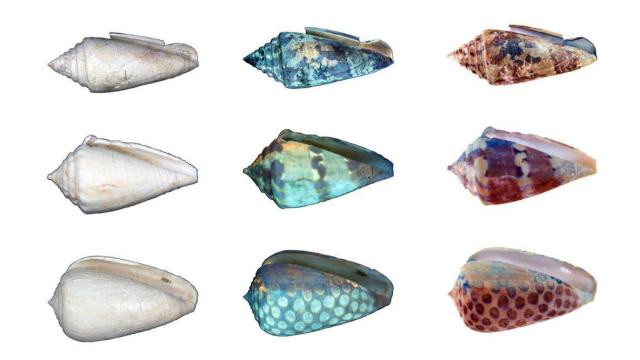Over time, most things lose their lustre — like these ancient seashells. But now, scientists are able to glimpse what the now-white shells looked like in their prime using UV light.
While wind, water and dust have had their way with the pigment of the shells, reports Popular Science, UV light reveals where areas of coloured organic matter once lay — as shown in the middle column of images above. Here, the technique has been applied to different varieties of cone snail shells. While it’s not known exactly what causes the shell to fluoresce, author of the study Jonathan Hendricks does speculate what may cause the effect, writing in PLoS One:
[I]t seems that oxidation — caused either naturally by exposure of shells to sunlight over prolonged periods of time, or artificially by soaking in bleach for several days — plays a role in causing formerly pigmented regions of fossil shells to fluoresce under UV light, though the reason is not currently understood.
In the meantime, he’s taken a stab at recreating what the shells may have looked like before their surfaces faded. Those results are shown in the right-hand column of the image. Which is your favourite? [PLoS One via Popular Science]
Picture: Jonathan Hendricks
